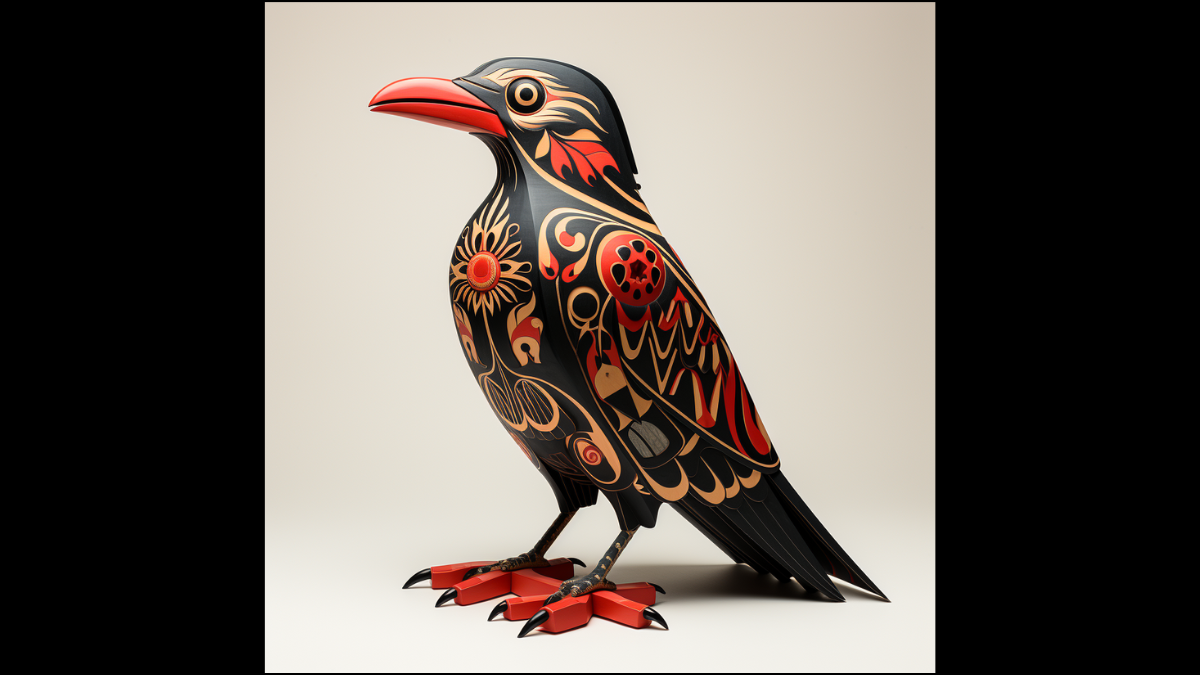In world mythology, the Raven occupies a singularly complex and vivid role within the Haida people’s traditional narratives. The Haida, an indigenous group found in the Haida Gwaii archipelago in British Columbia, Canada, revere the Raven not only as a master trickster but also as a transformer, a bringer of light, and an instigator of creative chaos, who carved the world from its primordial formlessness into its present state. An emblem of intricacy, the Haida Raven is a motif that continuously fosters avenues of both artistic exploration and spiritual reverence.
At dawn, in the far reaches of the North Pacific, the skies whisper tales carved out from millennia of Haida civilization, tales scripted with the ink of nature, where the Raven—a dark, intelligent force—dances with deceptive grace. This enigmatic bird, inky feathered and with eyes that hold an abyss of cosmos within them, is a figure shrouded in complex garments of mythology, painting both the Haida spiritual skyline and artistic canvases with strokes of ingenuity and whispers of ancient secrets.
In Haida art, Raven bursts forth in an amalgamation of fluid lines and evocative forms, a living testament to the intricacy of life itself. The Raven’s effigy comes alive in lush totem poles carved from the resilient red cedar trees that stand sentinel across the Pacific Northwest. These magnificent carvings narrate the myriad tales of the Raven, frozen in moments of cunning, generosity, and celestial connection. In these art pieces, every curve is a narrative, every line a pathway to deeper understanding, and every shade of burnt umber a testament to the Raven’s rich legacy within the Haida community.
The Raven’s deeds, recounted in an oral tradition rich with nuance, embody a spirit untamed and brimming with potentiality. His stories are not linear but cyclical, not bound by the constraints of good or evil but revolving around transformation, innovation, and the continuous cycle of creation and recreation. Here, the Raven is the world’s craftsman, an agent of celestial forces molding reality from the raw materials of dreams, desires, and the primal chaos of the pre-cosmic egg.
One of the Raven’s most illustrious tales involves the theft of the sun—a beacon of enlightenment—from a great chief who had concealed it in a box, hiding away the world’s illumination. Through an act of clever subterfuge, Raven retrieved the sun, releasing it into the sky and gifting light to all of humanity. This act, both selfish and magnanimous, narrates the Haida perspective on the intertwined dance of darkness and light, chaos and order, revealing the Raven as a figure that transcends dualities, existing in a realm where creativity sprouts from the convergence of opposites.
Yet, within this grandeur, there is also the Raven’s playful spirit, embodying laughter that echoes in the forests, a mirthful trickster who revels in the joy of existence, a maestro orchestrating the music of life with a baton of feathers and beak sharp as a sculptor’s chisel, crafting narratives from the clay of primal earth. In this, the Raven teaches a lesson on the joyous unpredictability of life, urging a celebration of the spontaneous, the novel, and the ingeniously created.
The Haida Raven is not merely a figure etched in the annals of mythology but a living, breathing entity whose spirit pulsates in the heartbeat of the Haida people, fostering a vibrant culture of artistic ingenuity and spiritual depth. A confluence of the mysterious and the profound, the celestial and the earthly, the Haida Raven stands as a beacon inviting all to delve into a rich, uncharted terrain of myth and revelation, where every tale is a cosmos, every artistic stroke a constellation, and every echo a universe in continuous, joyous, transformative flight.
